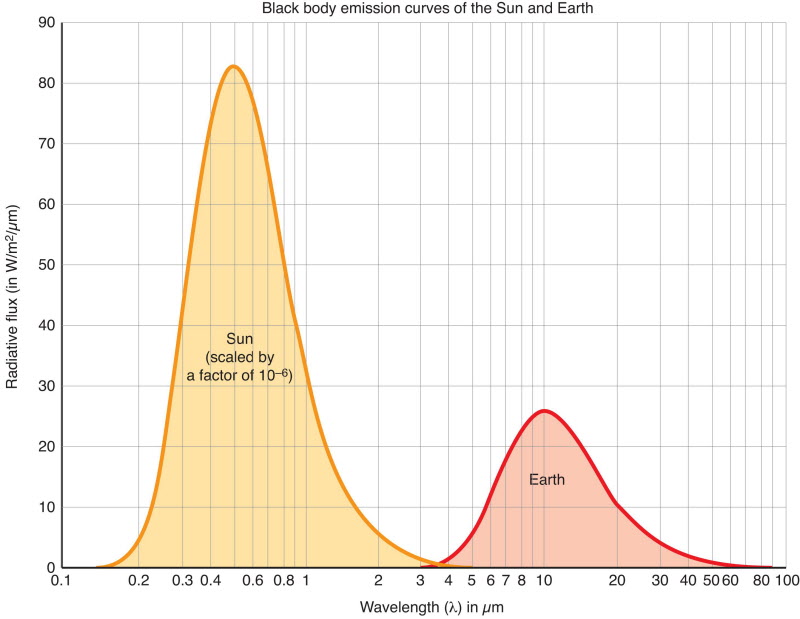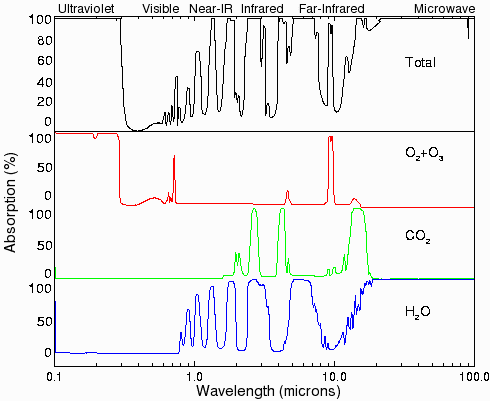flacaltenn
Diamond Member
Its not the beam that is focused, its the gas ability to react to the beam. A black body, such as the earth, emits broadly (3.5um to over 70um). The gases, not so much.That's because all your references ASSUME that the reader will know that limited volume TRAVERSED by the IR rays will not contribute SIGNIFICANT heating compared to the heat effect that is literally FOCUSED on the objects to be warmed. So maybe it's sloppy not to explain all that. But it's not germane to the FOCUSED heating they want to discuss.
For instance. Similar article. 1st one I found about IR focused heating. If you READ CAREFULLY -- this "omission" is completely addressed. Drop it. This proves nuttin...
Article is about analyzing advantages of IR heating for agricultural plots.
An alternative approach for infrared heater control in warming and extreme event experiments in terrestrial ecosystems
A technique that has been gaining ground in climate manipulation studies is the use of IR lamps (Aronson & McNulty 2009). Harte et al. (1995) were presumably the first to use such overhead heaters. In their field experiment, which started in 1991, Harte et al. suspended commercially available IR lamps above montane meadow plots. The lamps emitted a constant flux, which warmed vegetation and soil year-round. Later, Nijs et al. (1996) improved this technique by adding a modulator of the IR flux, which made it possible to accurately uphold a constant difference between the surface temperatures of warmed and control plots. Without such modulation, fluctuations in wind speed, which bring cooler ambient air to the warmed plots, enhance surface temperature variability together with increasing the mean. One of the benefits of using IR heaters is that this approach does not require enclosing the plants, so wind speed and light are hardly influenced. Furthermore, the warming is direct: the IR lamps heat the canopy surface without having to overcome a boundary layer resistance, which makes the technique very responsive (Nijs et al. 1996; Kimball et al. 2008), although this does imply that the air is only warmed indirectly and generally to a lesser extent than the surface. Finally, the whole canopy and the soil are warmed (Kimball 2005), which makes it a highly inclusive technique
These folks were more RIGOROUS and careful to quantify exactly what "air gets warmed"....
Sounds like they are acknowledging that it isn't IR that is heating the air but conduction from the solid surfaces that are being warmed by IR. Which solid surfaces in the atmosphere do you think are being warmed by outgoing IR passing through the atmosphere?
No.. They were ultra careful to specify that they are NOT saying the IR doesn't directly warm the air. Read it again. .......... "this does NOT imply that air is only warmed indirectly".. Meaning that IT DOES. And ..... "(does NOT imply) ..... generally to a lesser extent than the surface"..
THAT -- is more a rigorous SCIENTIFIC treatment of the situation than a fucking MARKETING document for a commercial heat lamp..
The individual gases have areas of resonance where they are affected by IR. The warming is very minuscule. Outside of a gases area(s) of resonance there is no effect of pass through IR.
It's only negligible if the radiation path geometry is limited.. As in the case of a focused beam IR heater for instance. It's NOT negligible for an IR emitter the size of a fucking planet -- in direct line of sight with a relatively thick OCEAN of gas....
lets take a look at your ocean and how little is actually affected by LWIR.
View attachment 173482
Every one of the areas that are grey, in this graph, are the gases area(s) of resonance. Areas where IR will interact with the specific gas at a specific wavelength. The only gas with the mass and resonance to react within the atmosphere is water vapor.
CO2 was supposed to "enhance" the effect of water vapor but empirical experment evidence suggests otherwise.
That's a bum graph.. In order to see the SHAPE of the Earth's IR emission spectrum -- you need to plot it on a LOG scale for magnitude. Not linear like your graph. Because even 1% of that energy is significant.



